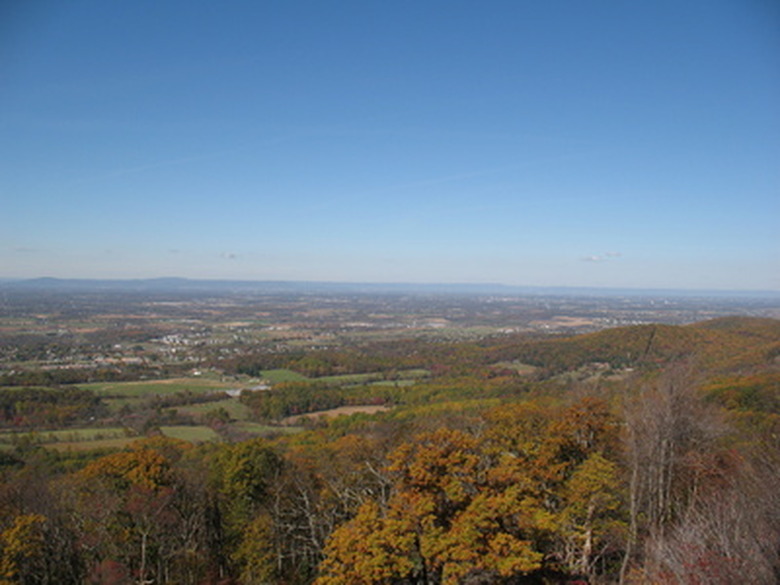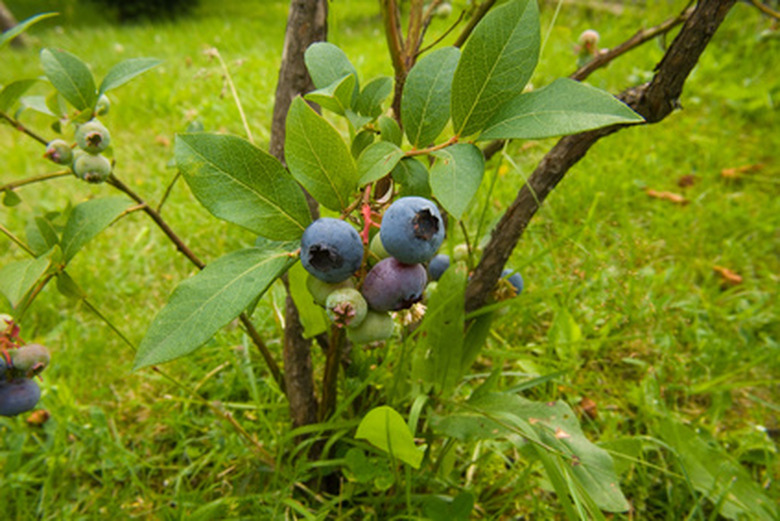Shade Plants In Maryland
The diversity of the Maryland climate allows for abundant planting of a wide variety of shade trees. White oak, silver maple and loblolly pine grow abundantly in this area and produce considerable shade around home landscapes. Shade plants in Maryland include those plants that thrive in the shady environments below the thick canopies of shade trees. These plants represent certain types that can tolerate the difficult growing conditions featured in the shade environment. Dry soil, lack of moisture and the obvious lack of light require a plant to adapt to survive. Shade plants tend to have shallow roots since many of these plants live beneath the canopy of trees in the forest.
Christmas Fern
The ethereal foliage of the Christmas fern provides the perfect amount of texture in the shade garden. This native of Maryland grows to a mature height and width of 2 feet and produces the traditional fronds of standard ferns. Christmas fern tolerates the climate in USDA hardiness zones 3 to 8 and likes well-drained soil. This plant can be found in woodlands and shady garden beds throughout the mid-Atlantic region. This low-maintenance plant reproduces with spores generated on the undersides of fronds. Christmas fern takes its name from its ability to retain color through part of the winter, allowing the plant to be used in holiday decorative arrangements.
- The diversity of the Maryland climate allows for abundant planting of a wide variety of shade trees.
- Shade plants in Maryland include those plants that thrive in the shady environments below the thick canopies of shade trees.
Spicebush
Spicebush shrubs survive under the canopy of trees and thrive in the moist woodland environment in these locations. This beautiful shrub produces small yellow flowers in the spring and fleshes out with abundant oval leaves for the remainder of the growing season. Spicebush is hardy in zones 5 to 9 and grows up to 12 feet high. This plant puts on a brilliant foliage display in the fall featuring bright yellow leaves that exhibit a light fragrance when crushed. This shrub likes full to partial shade and will tolerate some wet locations with slightly acidic soil. Plant the spicebush in a well-drained, shady location and you'll be rewarded as this shrub fills out to a natural, rounded form.
Black Huckleberry
The black huckleberry provides interesting foliage, edible fruit and the perfect shelter for wildlife. Birds and small mammals will flock to this shrub for protection as well as food. Black huckleberry produces reddish bell-like flowers during May and June. This plant later produces dark berries with seeds in mid summer. Black huckleberry features oval-shaped leaves with a slightly shiny appearance. It prefers shade locations in woods and dense undergrowth. This plant will tolerate a range of soil types including dry areas and sandy soil. Mature black huckleberry plants reach a height of 3 to 4 feet.
- Spicebush shrubs survive under the canopy of trees and thrive in the moist woodland environment in these locations.
- This plant puts on a brilliant foliage display in the fall featuring bright yellow leaves that exhibit a light fragrance when crushed.

